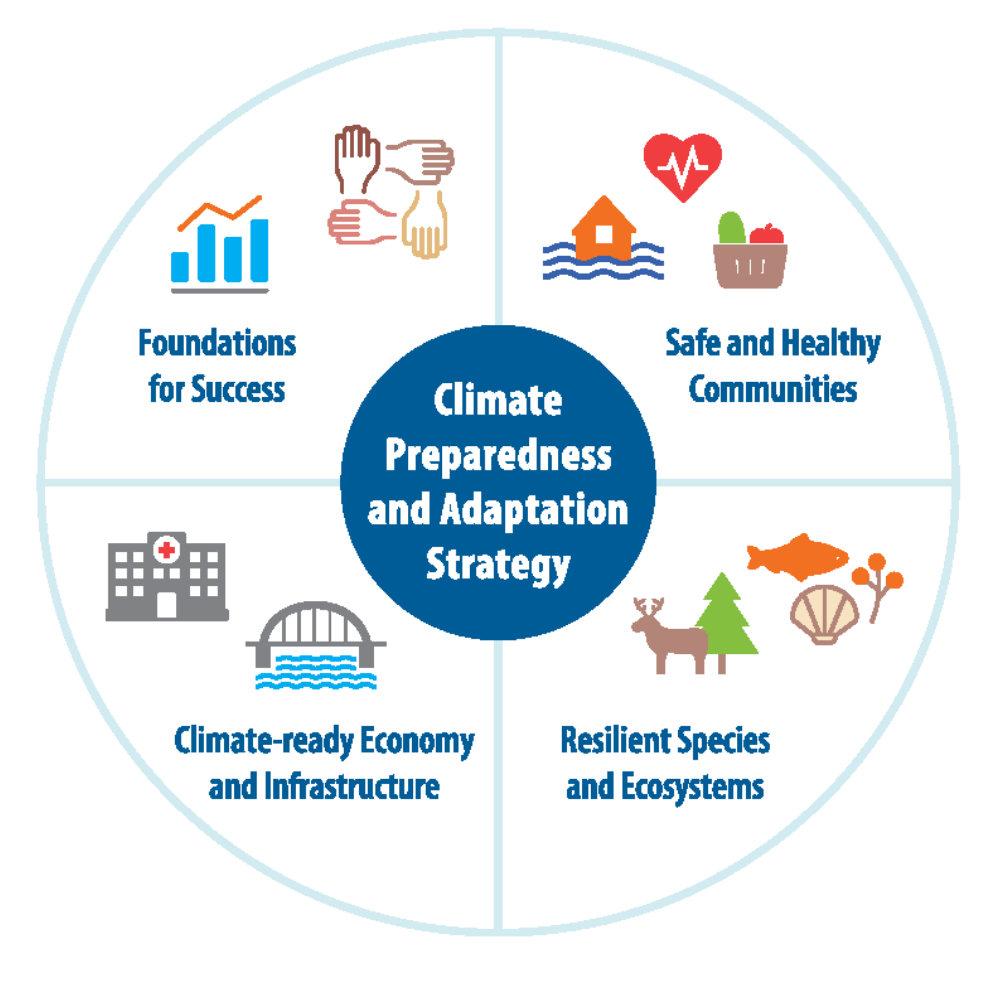Climate Preparedness and Adaptation Strategy
B.C.’s Climate Preparedness and Adaptation Strategy outlines four pathways to help ensure we stay safe and to prepare for a changing climate. The strategy highlights B.C.'s overall direction and actions that the Province is taking to help better understand and adapt to the impacts of climate change.
The strategy contains foundational actions prioritized from engagement on the draft Climate Preparedness and Adaptation Strategy and other factors such as government’s response to the extreme weather events of 2021, which included more than $2.1 billion in additional funding committed to helping people and communities recover and adapt. The strategy builds on the work already underway in B.C. to prepare for climate change and is informed by the 2019 Preliminary Strategic Climate Risk Assessment, which examined some of the greatest risks to B.C. as a result of climate change.
- Read the Climate Preparedness and Adaptation Strategy (PDF, 7MB)
- Read the Summary of the Climate Preparedness and Adaptation Strategy (PDF, 1MB)
Pathways and actions
Actions in the Climate Preparedness and Adaptation Strategy are divided into four key pathways:

1. Foundations for success: partnerships, knowledge and decision-making
This pathway will help to improve our understanding of the changing climate and how it will influence our lives. Actions aim to build capacity and access to climate data, bring future climate considerations into decision-making and create meaningful partnerships to plan for the changes.
Key themes
- Collaboration with Indigenous peoples
- Climate monitoring and forecasting
- Understanding climate risks
- Education on climate impacts and adaptation
Read the full list of actions in the strategy (PDF, 7MB)
2. Safe and healthy communities
Communities play a critical role in strengthening climate resilience in B.C. The Province is working together with Indigenous Nations, local governments, and other organizations to reduce risks from heatwaves, flooding and wildfires, as well as enhance climate resilience, health and wellness.
Key themes
- Community adaptation planning and implementation
- Indigenous-led climate adaptation knowledge and capacity building
- Wildfire prevention and mitigation
- Enhanced flood management
- Health and wellness
Read the full list of actions in the strategy (PDF, 7MB)
3. Resilient species and ecosystems
B.C. is home to a rich diversity of species and ecosystems. In this pathway, actions will help to increase our understanding of climate impacts for key species, habitats, and landscapes. Actions will also work to strengthen the resilience of the marine environment and enhance B.C.’s watersheds.
Key themes
- Healthy waters
- Resilient species and ecosystems
Read the full list of actions in the strategy (PDF, 7MB)
4. Climate-ready economy and infrastructure
To maintain a healthy, resilient economy in all parts of B.C., we need to proactively include climate impacts in business decisions and the way we design and build infrastructure – from roads and bridges to schools and hospitals. The actions in this pathway will help to reduce climate risks while enhancing our economic resilience to climate impacts.
Key themes
- Climate-ready infrastructure and buildings
- Climate-ready industry
